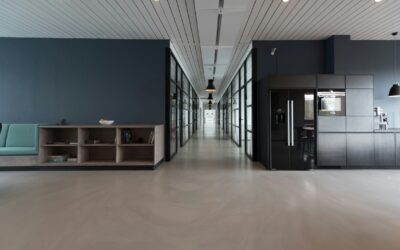How 3D Printing Benefits Contractors in the Construction Industry

3D printing is a revolutionary technology that is generating a lot of attention these days, especially in the construction industry. It has proven to be a beneficial tool for contractors in several ways, ranging from faster production time to more creative freedom.
Keep reading to learn more.
What Is 3D Printing?
3D printing (also known as additive manufacturing) involves using machines that are capable of building objects from designs created with computer software. The object being built is created layer by layer until it reaches its final form. This process differs from traditional manufacturing methods because there are no tools involved to manually cut or mold materials—instead, all pieces are formed simultaneously through layers of material being stacked on top of one another until they fuse into one finished product.
The Benefits of Using 3D Printing in the Construction Industry
Reduced Risk of Health and Safety Hazards on Site
Since 3D printing minimizes the need for dangerous manual labor, there are fewer incidents of accidental cuts, scrapes, and other more serious injuries that are common in traditional construction jobs. Additionally, the finished products will also have smooth edges, making them less likely to cause injury when handled or transported by workers.
Another way 3D printing reduces accidents on the job is by ensuring all parts are made exactly to specifications, with no chance of defects slipping through during the manufacturing or assembly processes. This eliminates incidents where machines break down because they weren’t built well or materials were used incorrectly—a potentially dangerous situation for employees.
Decreased Waste Production
The construction industry significantly contributes to global waste production. Due to the precision with which 3D printing uses resources, it can significantly reduce the amount of waste generated during construction.
Increased Accuracy
The precision of 3D printing means that contractors can expect fewer errors when installing printed components into a structure’s framework. To reach this level of accuracy using traditional manufacturing processes, contractors would have to spend more cost per unit overall to buy molds and other tools that have been designed specifically for each part being created within a project before any manufacturing takes place.
They will also have to consider additional labor costs associated with designing these tools from scratch every time new products are needed. On the other hand, with 3D printing, they can achieve better accuracy at a lower cost per unit.
Faster Construction Speed
3D printing is more efficient because it uses fewer materials and gets things done faster than traditional construction methods. It also allows you to build more complex structures than what’s typically possible with manual labor alone.
Allows for More Creative Freedom
3D printing allows you to create new and unique designs, which is especially valuable in the construction industry. Since 3D printable parts can be produced in a variety of shapes and sizes, they can be made to fit into any space or configuration. This gives contractors the ability to produce custom parts to fit specific needs, which results in more accurate designs that are less likely to leak or fail over time.
With traditional building techniques, you are limited to the shapes and sizes that can be created by your tools. However, with 3D printing technology there are no limits on what shape or size of structure can be built thus providing contractors more creative freedom when designing their projects while allowing them to meet their clients’ demands.
Get in touch with Curtis Partition to learn more about how 3D printing can be incorporated into your next construction project!
Related Articles
Fire-Rated Partitions: A Crucial Element in NYC Construction Safety Protocols
Architects and builders must ensure that their buildings can keep people safe from fires in a bustling city like New York. This is where fire-rated partitions come into play, serving as an essential element in improving safety. These specialized barriers protect lives...
Space Optimization Tips for Builders to Transform Projects
Are you a builder looking to use the available area efficiently in your projects? Whether you're working on residential or commercial buildings, space optimization is key to creating functional and visually appealing interiors. Let's explore some innovative tips for...
Ensuring Safety from the Ground Up: Curtis Partition’s Commitment to Construction Safety
As we commemorate Construction Safety Week, it's imperative to underscore the importance of safety measures within the construction industry. Among the various hazards encountered on construction sites, falls remain a significant concern, alongside risks associated...



